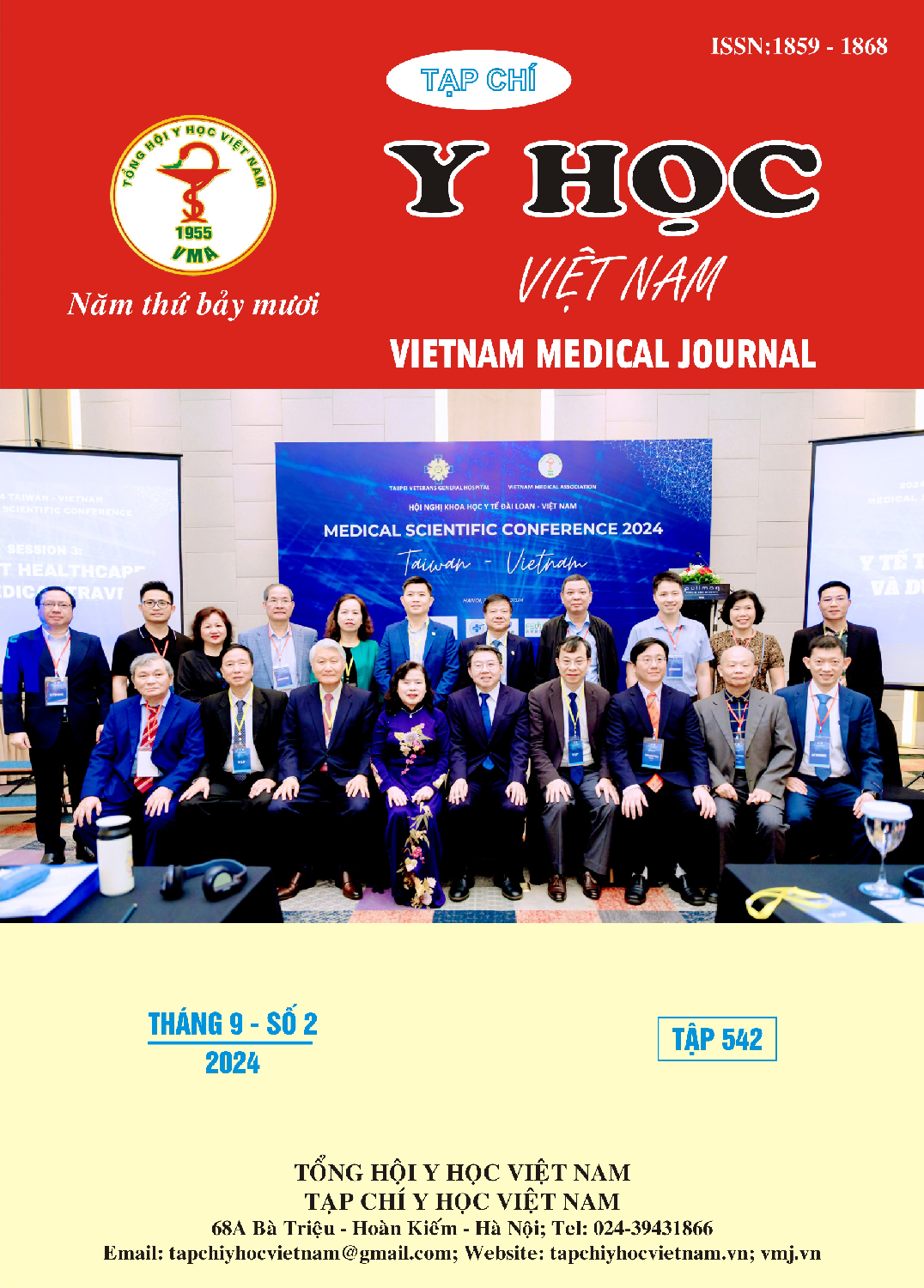EVALUATION OF THE SIMILARITY OF BLOOD OXYGEN SATURATION BETWEEN OVERNIGHT PULSE OXIMETRY AND RESPIRATORY POLYGRAPHY AND THE POSSIBILITY OF SCREENING OBSTRUCTIONAL SLEEP APNEA IN PATIENTS WITH TYPE 2 DIABETES MELLITUS
Main Article Content
Abstract
Background: Obstructive sleep apnea (OSA) is a common sleep disorder in patients with type 2 diabetes mellitus (T2DM), contributing to cardiovascular events and poor outcomes for patients. There are several challenges to diagnosing OSA with polysomnography or respiratory polygraphy, including uncooperative patients, complex measurement techniques, and expensive expenses. The overnight pulse oximeter is a simple, easy-to-use, and inexpensive tool that should be studied to assess the ability to screen for OSA in patients with T2DM. Objectives: 1) Evaluate the similarity of the lowest blood oxygen saturation values (spO2 min) and oxygen desaturation index (ODI) between the overnight pulse oximeter and the respiratory polygraphy; 2) Evaluate the possibility of predicting OSA of spO2 min and ODI measurement by overnight pulse oximetry in T2DM patients. Materials and methods: A cross-sectional descriptive study was conducted on 72 type 2 diabetic patients at Can Tho University of Medicine and Pharmacy Hospital in 2023–2024. Results: The similarity between spO2 min <90% measured by overnight oximetry and respiratory polygraphy was moderate (Kappa = 0,442). The similarity between ODI≥5 measured by overnight oximetry and respiratory polygraphy was good (Kappa = 0,627). When using overnight oximetry to diagnose OSA in individuals with T2DM, the value of spO2 min <90% has 100% sensitivity, 31,25% specificity, 64,5% positive predictive value, and 100% negative predictive value; ODI index ≥5 has 82,5% sensitivity, 75% specificity, 80,49% positive predictive value, and 77,42% negative predictive value. Conclusion: The values of ODI measured by the overnight pulse oximeter are good, similar to the results measured by the respiratory polygraph. ODI≥5 can be used to screen for OSA in patients with T2DM.
Article Details
Keywords
Obstructive sleep apnea (OSA), type 2 diabetes, overnight (pulse) oximetry.
References
2. Bahare Andayeshgar et al (2022), “The prevalence of obstructive sleep apnea in patients with type 2 diabetes: a systemic review and meta-analysis”. Sleep Science and Practice. 6 (6).
3. Sarah L. Appleton, Andrew Vakulin, R. Doug McEvoy et al (2015), “Nocturnal Hypoxemia and Severe Obstructive Sleep Apnea are Associated with Incident Type 2 Diabetes in a Population Cohort of Men”, JCSM. 11(6), p. 609-614
4. Frances Chung et al (2012), “Oxygen Desaturation Index from Nocturnal Oximetry A Sensitive and Specific Tool to Detect Sleep-Disordered Breathing in Surgical Patients”. Anesthesia & Analgesia. 114 (5), P. 993-1000
5. Peilin Hui et al (2016), "Nocturnal hypoxemia causes hyperglycemia in patients with obstructive sleep apnea and type 2 diabetes mellitus", The American Journal of the Medical Sciences. 351(2), p. 160-168.
6. Maude Malbois et al (2010), “Oximetry alone versus portable polygraphy for sleep apnea screening before bariatric surgery”. Obes Surg.
7. Lalee Varghese et al (2022), “Oxygen desaturation index as alternative parameter screening patients with severe obstructive sleep apnea”, Sleep Sci. 15(1), p. 224-228.


